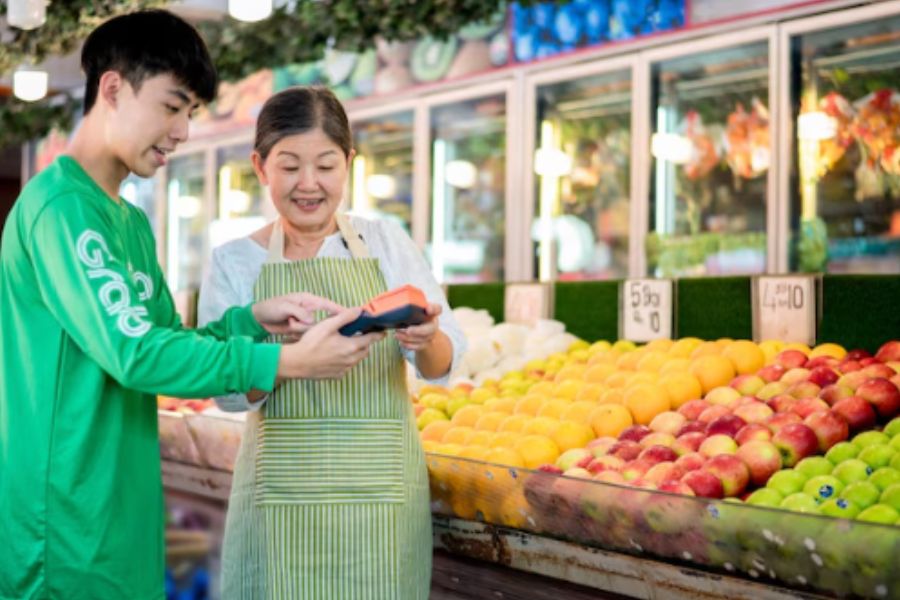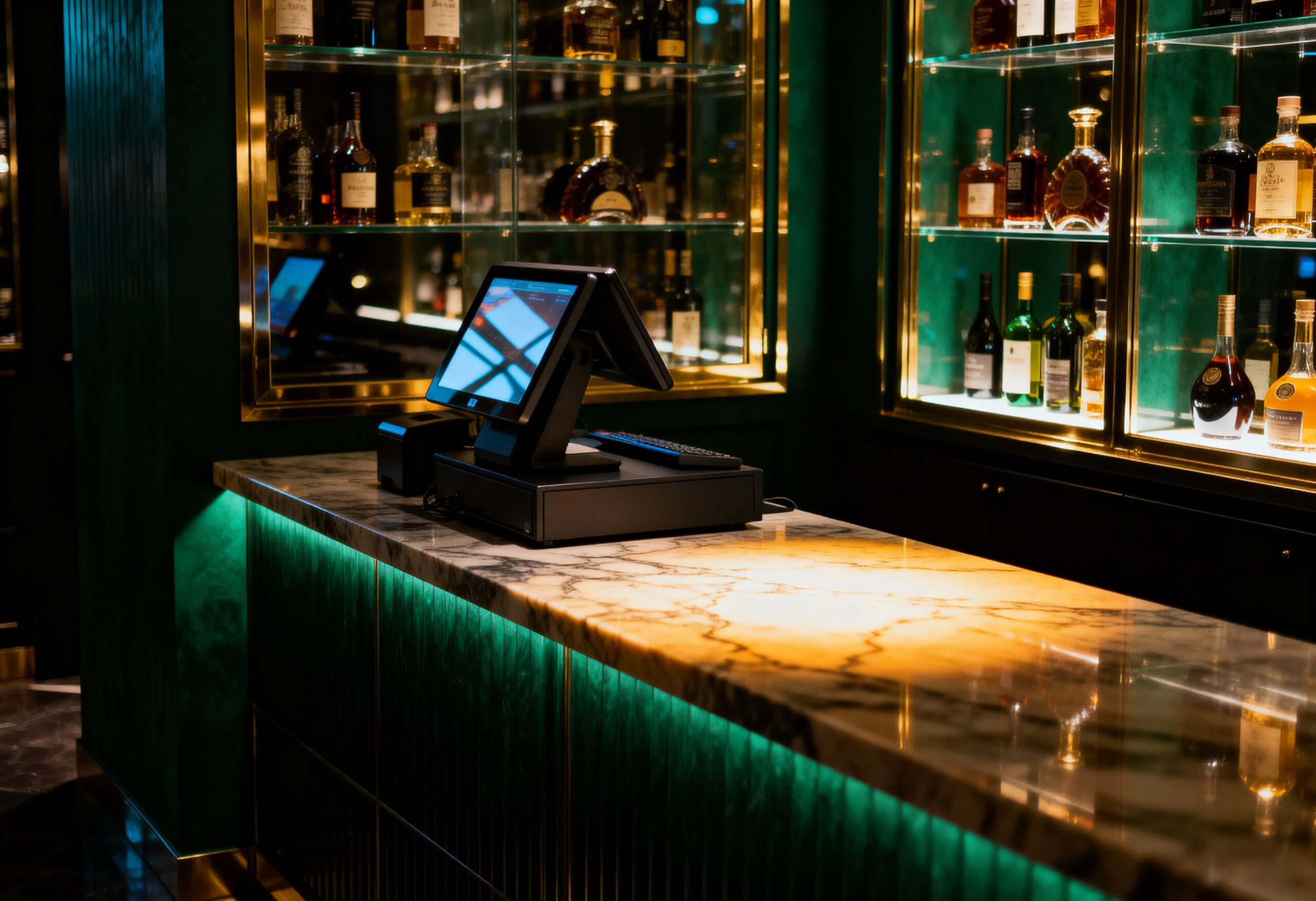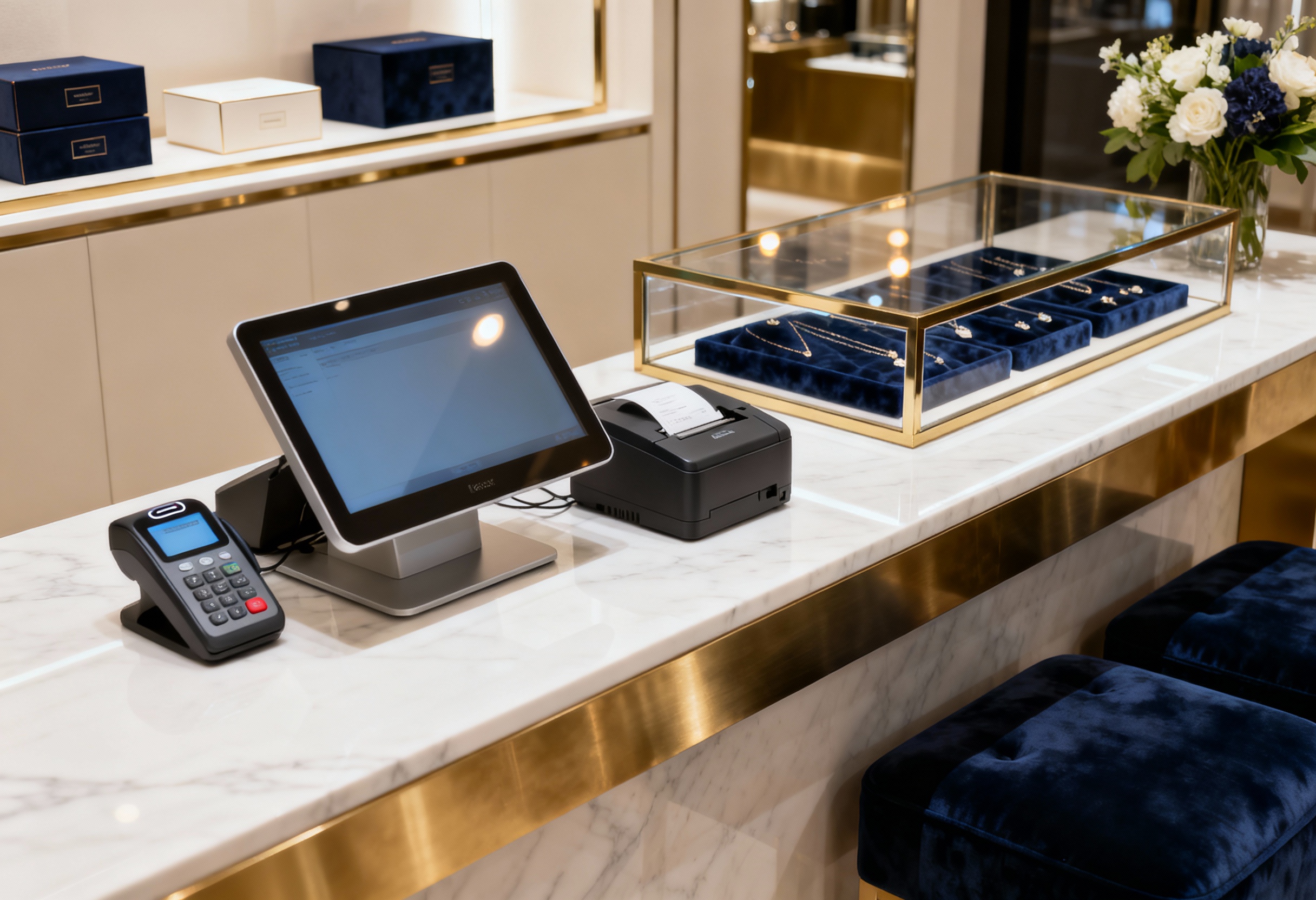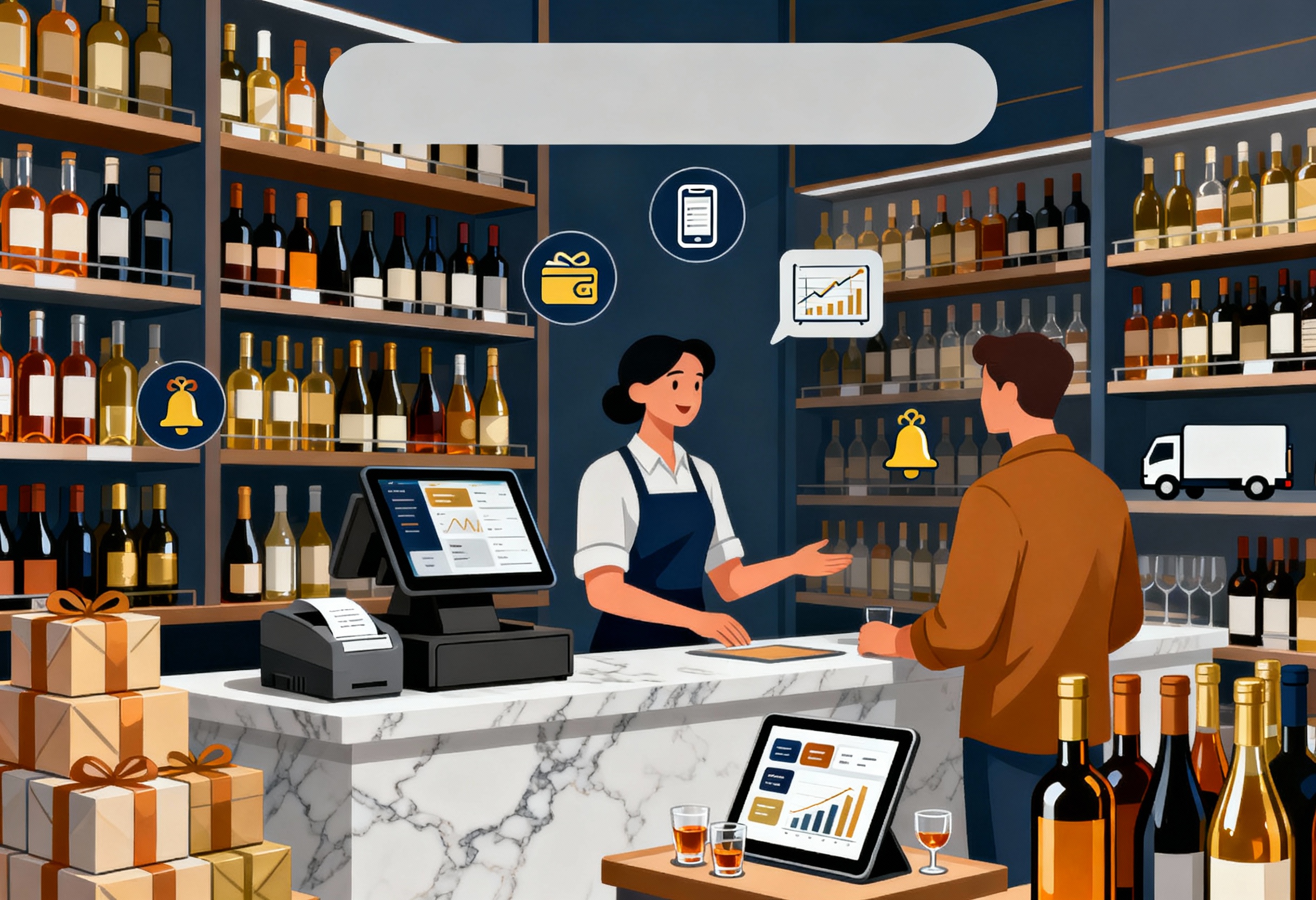Good service stands at the heart of successful grocery retail in Thailand. When shoppers visit a grocery store, they expect quick checkouts, accurate pricing, and knowledgeable staff responses to their questions. A Point of Sale (POS) system empowers store teams to meet these expectations consistently. This guide explores practical tactics that help businessmen use their grocery store POS Thailand systems to enhance customer satisfaction and streamline daily operations. We’ll examine specific features relevant to Thai markets, including inventory tracking for local produce, multi-language support, and automated promotions for seasonal items.
Keep reading!
Highlights:
- Grocery stores in Thailand need a POS system that can handle high-volume inventory, variable-weight items, local payment methods, and fast checkout to match the pace and preferences of Thai shoppers.
- Tactics like real-time stock tracking, mobile checkout, flexible payments, staff performance tools, and personalized loyalty programs help grocery retailers deliver faster service and build stronger customer loyalty.
Benefits of a Grocery Store POS System for Thai Businesses
A grocery store POS Thailand system delivers specific advantages tailored to Thai retail operations. The system tracks real-time inventory levels of fresh produce, packaged goods, and local specialties, helping managers make informed restocking decisions.
Staff can process transactions in both Thai and English, accommodating local shoppers and tourists effectively. The POS handles multiple payment methods common in Thailand, including PromptPay, mobile banking, and credit cards.
Modern POS systems integrate seamlessly with local tax reporting requirements and generate compliant documentation for Thai revenue authorities. They automatically calculate VAT and produce tax invoices in the correct format.
These capabilities translate directly into better customer service, reduced operational costs, and increased profitability for Thai grocery businesses.
Key Features of a Grocery Store POS System
Due to its unique operating environment, a powerful grocery store POS system must have:
- Inventory Management – The software tracks stock levels in real-time, automates reordering processes, and handles multi-variant products efficiently. This precision in inventory control prevents stockouts and excess inventory, maintaining optimal product availability for customers.
- Sales Reporting and Analytics – The POS system generates detailed reports showing sales patterns, busy shopping periods, and top-performing products. Store managers use these insights to refine their inventory selection, adjust pricing strategies, and create targeted promotions that resonate with shoppers.
- Customer Management – POS systems excel at recording customer purchase histories, implementing loyalty rewards, and delivering personalized promotions. These features help grocery stores create meaningful connections with shoppers and encourage return visits.
- Payment Processing – The system processes credit cards, debit cards, contactless transactions, mobile wallets, and EBT payments seamlessly. This payment flexibility speeds up checkout times and enhances customer satisfaction through convenient payment options.
- Employee Management – The POS tracks employee hours, schedules, and sales metrics automatically. Managers gain clear visibility into peak staffing needs and individual performance data.
- Integrated Scales and Barcode Scanners – The POS connects directly with scales and barcode scanners to process produce and packaged goods accurately. This integration accelerates the checkout process, reduces manual entry errors, and shortens customer wait times.
Tactics for Delivering Excellent Services with A Grocery Store POS Thailand
Let’s go into details for the best practices to enhance the POS experience to increase sales and customer loyalty.
Maintain Perfect Inventory Levels
Perfect inventory levels don’t happen by chance. They require a grocery POS system that tracks stock in real time, sends automatic low-stock alerts, and supports scheduled or rules-based replenishment. When customers shop for everyday essentials, they expect to find what they need without delay.
A POS that gives store staff visibility into current inventory levels across locations makes it easier to restock before problems arise. This builds shopper confidence and reduces the risk of losing customers to competitors simply because an item wasn’t available.
►►► Optimal solution set for businesses: Multi store POS, Next-gen POS, Inventory Management Software (MSI), Self Service, Automation, Backorders
Speed Up Checkout Process
Slow checkout lines frustrate shoppers and discourage repeat visits. A well-configured POS system speeds up transactions through barcode scanning, automatic price and tax calculation, and mobile checkout options. Staff can assist customers and complete purchases directly from the shop floor using handheld devices, which helps reduce congestion at the counters and shortens wait times.
This approach is especially effective during peak hours or holidays when stores are crowded, and it shows customers that their time is valued.
Support Multiple Payment Options
Thai grocery shoppers use a wide range of payment methods, from traditional cash and credit cards to mobile wallets, QR code payments, and contactless options. A flexible POS system that supports all of these methods helps prevent checkout delays and missed sales caused by limited payment acceptance.
This flexibility also makes the store more accessible to all types of shoppers, from tech-savvy customers using PromptPay to older generations who still prefer cash. The ability to accept their preferred payment builds trust and encourages return visits.
Implement Prepaid Store Credit
Offering prepaid store credit allows customers to load funds into an account or card that can be used for future purchases. This not only improves checkout speed, since the payment process involves a simple scan and confirmation, but also increases the likelihood of customers returning to spend the balance.
For the retailer, it creates a predictable cash flow and deeper customer engagement. Staff can use the POS system to manage prepaid balances, apply them during checkout, and track usage history, all of which contribute to a smoother overall shopping experience.
Diversify Receipt Delivery Methods
Providing both printed and digital receipt options allows customers to choose their preferred format. Digital receipts appeal to environmentally conscious shoppers, reduce paper waste, and can be linked directly to a customer’s profile. This opens the door for future engagement through personalized emails, loyalty program updates, or tailored promotions based on past purchases.
A POS system that connects receipt data with a CRM or marketing tool helps the store build a more complete view of each customer, turning a routine checkout into a touchpoint for ongoing communication.
Implement an Omnichannel POS Experience
A strong grocery POS system doesn’t just serve in-store transactions, it also connects with online, phone, and messaging-based ordering channels. Features like BOPIS (Buy Online, Pick Up In Store), call-ahead reservations, and scheduled delivery provide shoppers with more flexible options, which is becoming increasingly important for busy Thai households.
This tactic reduces in-store foot traffic during rush hours, makes it easier to fulfill large or scheduled orders, and helps the store reach customers outside traditional business hours.
Facilitate Self-Service POS Options
McDonald’s 6% sales increase demonstrates clear business value from self-service implementation. Customers gain empowerment through transaction control and move at their preferred pace while avoiding communication barriers. The system also reduces checkout staffing requirements and shortens waiting lines. It allows personnel reallocation to higher-value activities throughout the store.
Enhance Customer Service
When a POS system is connected to customer data, staff can access detailed profiles that include past purchases, preferences, and loyalty status. This allows them to offer relevant product suggestions, apply loyalty rewards instantly, and resolve issues more effectively.
With mobile POS devices, employees can deliver this level of service on the shop floor instead of sending customers to the counter. Real-time access to information helps staff become more responsive, which can make a significant difference in how customers feel about their visit.
Gather and Respond to Customer Feedback
Data from RetailWise research shows that 52% of customers believe immediate feedback channels enable better issue resolution. Quick response times matter – 19% want to give feedback during transactions, and 34% expect options within 24 hours.
POS systems can be used to invite feedback during or shortly after a transaction. Whether through a prompt at checkout, a link on a digital receipt, or a follow-up email, providing customers with a voice helps identify service gaps early. More importantly, responding to that feedback shows customers that their opinions directly influence store improvements. In a market like Thailand where word-of-mouth and local reputation matter, being known as a store that listens and adapts can create a strong competitive advantage.
Automate Loyalty Programs
Automated loyalty programs through POS systems drive substantial revenue growth. The data demonstrates this impact clearly – just 5% of loyal customers generate a 75% sales increase. Members consistently spend 37% more than non-members.
With POS-based loyalty programs, stores can reward customers based on how often they shop, how much they spend, or which product categories they prefer. These systems automatically track points, apply discounts, and send personalized promotions, all without requiring manual input from staff. Customers are more likely to return when they know they’re earning rewards, and automated tracking removes the friction that often prevents shoppers from joining or using loyalty programs. Over time, this tactic builds a stronger customer base that stays with the brand.
How to Choose A POS System for Your Grocery Store?
Take the following steps to choose the right POS system for your Thai grocery store!
- Define Business Requirements
Assess your store’s specific requirements before selecting a POS system. Consider inventory size, staff count, and payment types you accept. A clear understanding of your needs guides you toward the most suitable system for your business.
- Compare Key Capabilities
Compare POS systems based on their capabilities. Seek systems offering strong inventory management, detailed reporting, and comprehensive payment processing. Make sure the system addresses the specific requirements of grocery retail operations.
- Prioritize Usability
Select a user-friendly POS system that staff can learn quickly. Complex systems create bottlenecks and mistakes. Prioritize systems with intuitive interfaces and provide thorough staff training.
- Ensure System Integration
Verify that the POS system works with your existing hardware, like barcode scanners and scales. Integration capabilities with accounting or e-commerce POS platforms add significant value.
- Evaluate Vendor Support
Select a POS provider offering exceptional customer support and training resources. This ensures prompt issue resolution and maximizes system benefits. Prioritize vendors offering round-the-clock support and comprehensive training materials.
- Review Total Investment
Evaluate the complete cost structure, including initial investment, recurring fees, and charges for additional features or support. Select a system that balances budget constraints with operational requirements.
ConnectPOS for Grocery Store Thailand
ConnectPOS delivers a dynamic POS for grocery store Thailand, which is designed specifically to drive store growth through tailored functionality. Our grocery store and supermarket POS system adapts to your unique business requirements while providing powerful tools that enhance both operations and customer experience.
- Custom screen layouts for different zones
Design interface screens to match your store’s layout—whether it’s fresh produce, checkout counters, or express lanes. This improves staff efficiency and simplifies training, especially in high-traffic stores.
- Staff management with role-based access and performance tracking
Assign user roles, monitor shift performance, and control access to POS functions. Managers can track individual sales, reward top performers, and coordinate shifts without disrupting service.
- Real-time inventory management with supplier catalog imports
Monitor fast-moving stock levels in real time, receive low-stock alerts, and automate reordering. Easily import vendor catalogs with product images, barcodes, and pricing to keep your inventory accurate and updated.
- Support for variable-weight items and barcode-connected scales
Sell items by weight such as meat, seafood, or fresh produce with direct scale integrations. The POS reads weight automatically and calculates pricing instantly, reducing manual errors and speeding up checkout.
- Flexible payment acceptance for local preferences
Accept a wide range of payment types including cash, credit cards, PromptPay, mobile wallets like TrueMoney, and QR code payments. Customers enjoy faster checkout and more convenience, whether shopping in-store or during promotions.
- Built-in loyalty and member pricing features
Reward frequent shoppers with custom loyalty programs, tiered discounts, and point-based rewards. Apply benefits in real time at checkout through phone numbers, member cards, or app integration.
- Omnichannel readiness with synced online and in-store sales
Manage phone orders, in-store pickup, and connected eCommerce platforms from one system. Customers can shop how they want, while your stock and promotions remain consistent across all sales channels.
- Multi-language interface and Thai market compatibility
Operate in both Thai and English, making it easier for your team and customers to navigate. The system also supports local tax structures and receipt formatting.
To Conclude
A modern grocery store POS Thailand system serves as the foundation for business growth, enabling personalized experiences, streamlined operations, and data-driven decision making. Thai grocery retailers who embrace these POS innovations gain competitive advantages through improved efficiency and superior customer service. Each enhancement – from loyalty programs to self-service options – contributes to a seamless shopping experience that keeps customers returning.
Ready to revolutionize your grocery store’s POS experience? Our team of retail technology specialists understands the unique needs of the Thai market and comes with an ultimate supermarket and grocery store POS solution. Contact us today and book a demo!
FAQs: Grocery Store POS Thailand
How can POS systems help manage Thailand’s fresh produce inventory?
POS systems designed for Thai grocery stores offer specialized features for fresh produce management, including weight-based pricing, variable pricing for seasonal items, expiration date tracking, and wastage monitoring to maintain profitability with perishable goods.
Are Thai language interfaces available for grocery POS systems?
Yes, quality POS systems offer full Thai language support for both staff interfaces and customer-facing displays, ensuring smooth operations and clear communication with shoppers throughout Thailand.
What hardware components are needed for a grocery store POS Thailand?
A complete grocery POS setup typically includes a terminal with a touchscreen, barcode scanner, receipt printer, cash drawer, customer display, scale integration for weighted items, and card payment devices that support Thai payment methods.
►►► Optimal solution set for businesses: Shopify POS, Magento POS, BigCommerce POS, WooCommerce POS, NetSuite POS, E-Commerce POS



